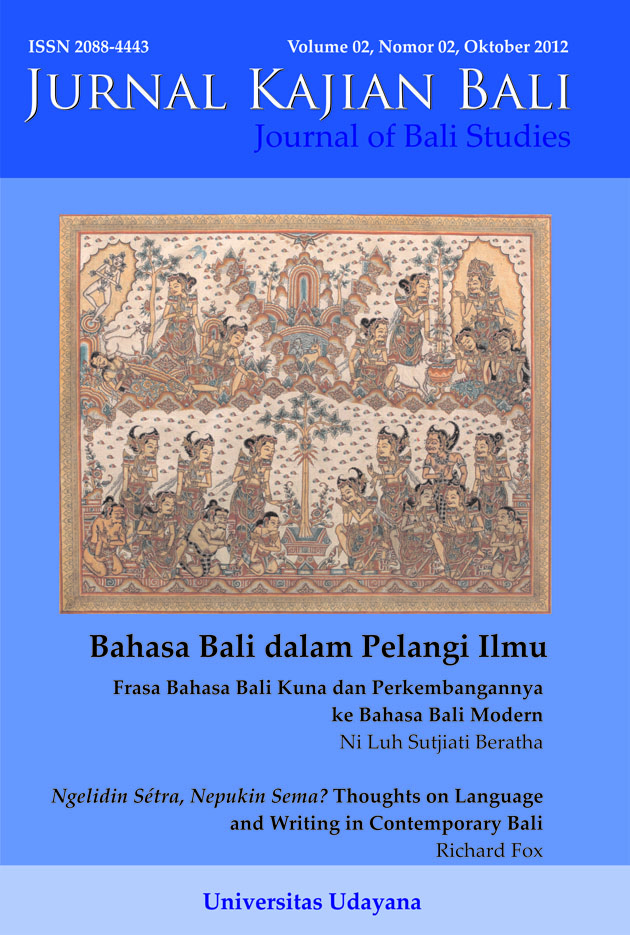Makna “Mengikat” Bahasa Bali: Pendekatan Metabahasa Semantik Alami
Abstract
Abstract
The Balinese verb ngiket ‘to tie’ can be expressed by anumber of lexicons, namely: ngiket/negul, nalinin, pesel,ngimpus, nyangkling, ngeju, nyamok, nyeet, medbed/maste,nyangcang, ngantus, ngancét, and nyepingin. ThroughNatural Semantic Metalanguage (NSM) approach, it canreveal that the first three Balinese lexicons have slightdifferences although they are belonging to the similarsemantic field, the rest, however carry the overt semanticdifferences. Ngiket/negul, nalinin and mesel seem to havesimilar object as well as the instruments used to do theactivity, that is tali ‘string, rope, thread, etc’. The others,such as ngimpus, for instance has specific object, that is thelegs of animal or human being to be tied, while nyangklingreferred to the hands.
Downloads
Keywords

This work is licensed under a Creative Commons Attribution 4.0 International License.



















